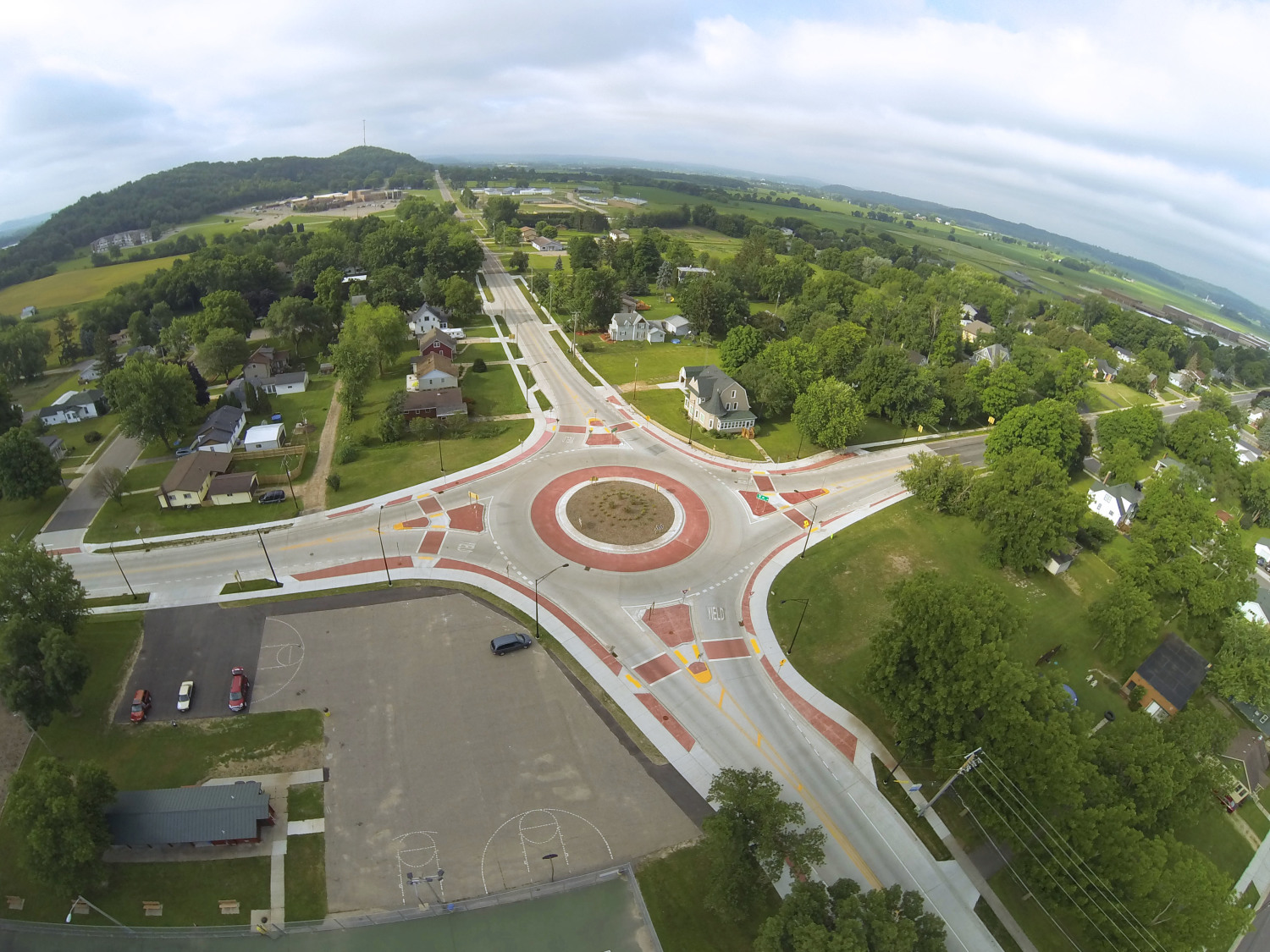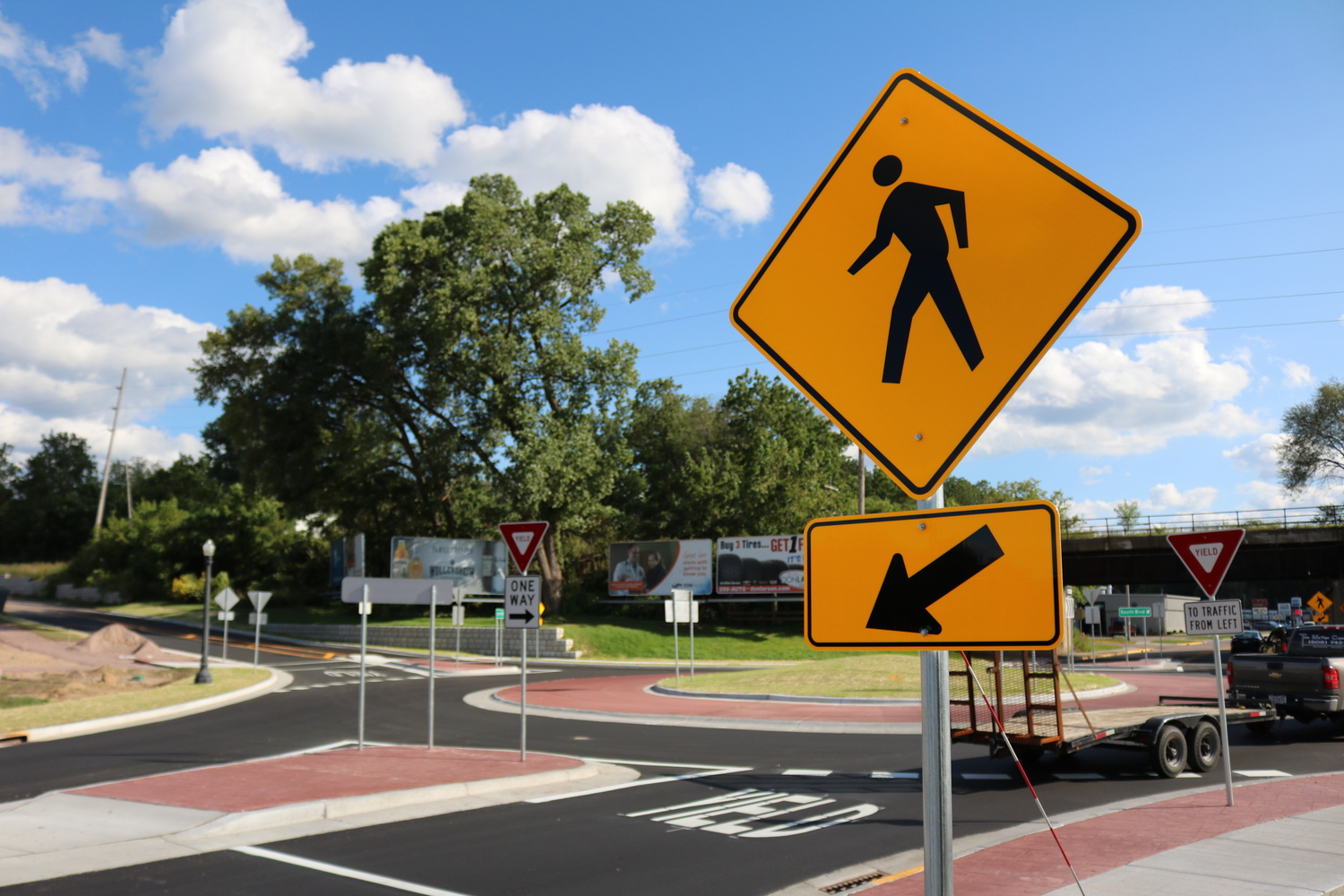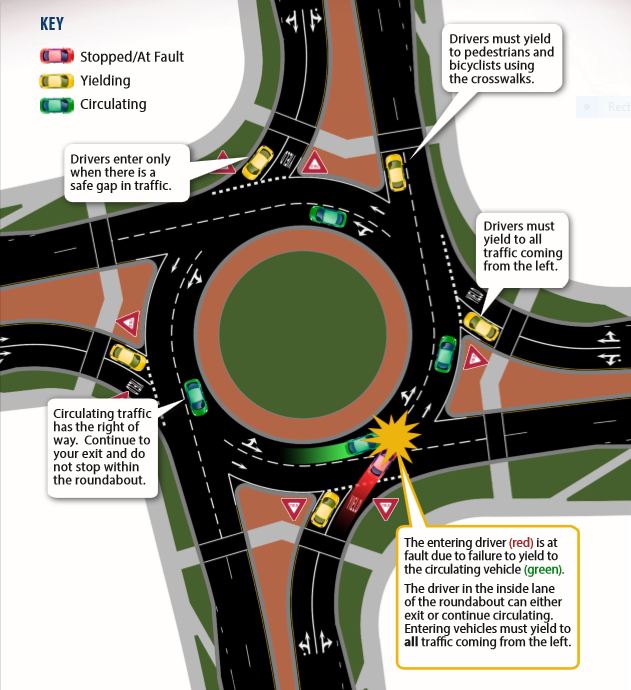Circular junctions existed long before the advent of the modern-day roundabout, with the United Kingdom leading the way in the 1960s and the U.S. following suit later, in 1990.
In a country where streets, neighborhoods and structures are generally laid out in a grid pattern, the introduction of a circular element such as a roundabout can feel out of place, even a bit unnerving.
Join us as we explore the benefits and best practices for successfully navigating these innovative round thoroughfares and how— one by one—they are positively impacting the safety, efficiency and ease-of-transport for many of our communities.

Round is sound
The Transportation Research Board and Insurance Institute for Highway Safety have both determined that roundabouts have lower crash rates than traffic signals or stop sign-controlled intersections. Due to their circular shape, roundabouts inherently help drivers avoid the three most severe types of intersection collisions: right-angle, left-turn and head-on, a 72-80 percent reduction in overall crash-related injuries.
The shape of the roundabout also lends itself to increased pedestrian safety. Because traffic moves in only one direction, and speeds are slower and more consistent, pedestrians have ample time to gauge oncoming traffic before making a crossing. In addition, the crossing distance within a roundabout is shorter than traditional intersections, minimizing the length and time a person is potentially vulnerable to moving vehicles.
Low-emission and efficient
How many times have you sat and waited…and waited…at a red traffic signal, with no foreseen traffic approaching or passing through the green light? Roundabouts provide a more efficient transportation experience. They are designed to handle higher traffic volumes while helping to get vehicles through more quickly. They are also more environmentally friendly, reducing idle time, subsequent noise pollution and fuel consumption—as well as harmful vehicle emissions.

Long-term affordability
Incorporating a roundabout into your community, like any major infrastructure improvement, has an upfront cost. Contrary to belief, however, roundabouts are actually more cost-effective in the long term. Installation of a roundabout minimizes electricity use and eliminates the need for recurring traffic signal maintenance, which costs—on average—$3,000 to $5,000 per year. In addition, the lifespan of a typical roundabout is about 25 years, so the compounded cost savings make a significant impact.
5 steps for safe, confident roundabout navigation
1. Anticipate! Think about which direction you are ultimately planning to go. Follow provided lane signage and road markings and pick the appropriate lane before you enter a roundabout. If you pick the correct lane on entry, you should not need to change lanes to exit to your desired destination.
2. Take it slow. Roundabouts are engineered to reduce vehicle speed. Take your time to ensure a safe, successful transition throughout.
3. Yield to traffic coming from the left. Yield to all traffic coming from the left (including bicyclists) already in motion within the roundabout. Traffic in a roundabout always circulates one way, in a counterclockwise direction. Enter when there is a safe and adequate gap.
4. Yield to pedestrians. Most roundabouts have designated crosswalks for pedestrians. They always have the right of way. Pedestrians should be assertive and point their intention to cross.
5. Give trucks space. Don’t crowd large trucks by trying to pass them or squeeze beside them in a roundabout.

Traffic Ergonomics
Roundabouts are more than mobility-enhancing designs. They’re traffic ergonomics. These innovative intersections are helping to create a more comfortable, safe and reliable experience for every member of the community.
The MSA roundabout team has a portfolio of successful projects and is ready to provide the right solution for your community’s transportation needs. Learn more about our Traffic Engineering and Roundabout services here or check out this footage by our Aerial Solutions Team of an MSA roundabout project in Appleton, Wisconsin!
Mark Lenters served as MSA’s vice president and Transportation program manager for the Southern region of the United States from November 2016 to June 2019.
